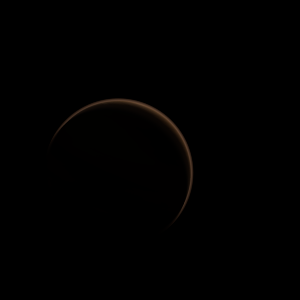|
|
Space Astro
|
Info for exoplanet "Wuxan"
| Scientific (actual) data |
|---|
| Name | HD 45364 b |
| Planet status | Confirmed |
| Mass sini | 0.1872 |
| Orbital period | 226.93 |
| Semi major axis | 0.6813 |
| Orbit eccentricity | 0.1684 |
| Angular distance | 0.020899 |
| Discovered | 2009 |
| Updated | 2012-01-30 |
| Omega | 162.58 |
| Tperi | 53500 |
| Publication | Submitted to a professional journal |
| Detection type | Radial Velocity |
| Star name | HD 45364 |
| Right ascension | 96.41° |
| Declination | -31.48° |
| Mag v | 8.08 |
| Star distance | 32.6 |
| Star metallicity | -0.17 |
| Star mass | 0.82 |
| Star sp type | K0V |
| Star temperature | 5434 |
| Wikipedia article | HD 45364 b |
Back
| |
| Fictional info (?) |
|---|
| Suggested name | Wuxan |
| Planet type | Cold planet |
| The volume of water detected has been estimated to be equivalent to the volume of water in Lake Superior. |
| Atmosphere | Hydrogen chloride | 51% |
| Formaldehyde | 43% |
| Krypton | 4.2% |
| Hydrogen deuteride (HD) | 1.2% |
| Ammonia | 0.00066% |
| Atmospheric pressure | 0.6 bar |
 |
| No known satellites |
| Google search for Wuxan |
|
Website by Joachim Michaelis
|
|
|
|